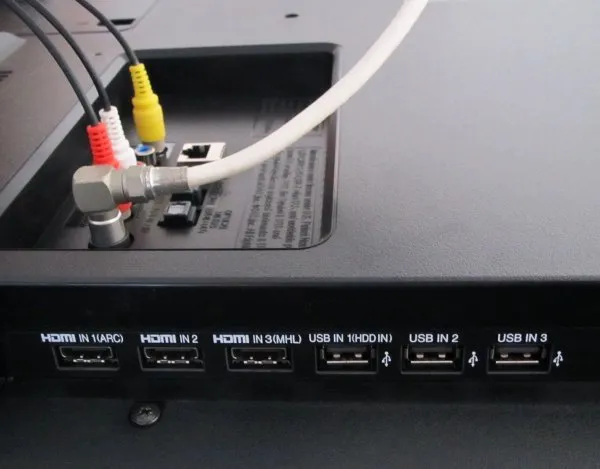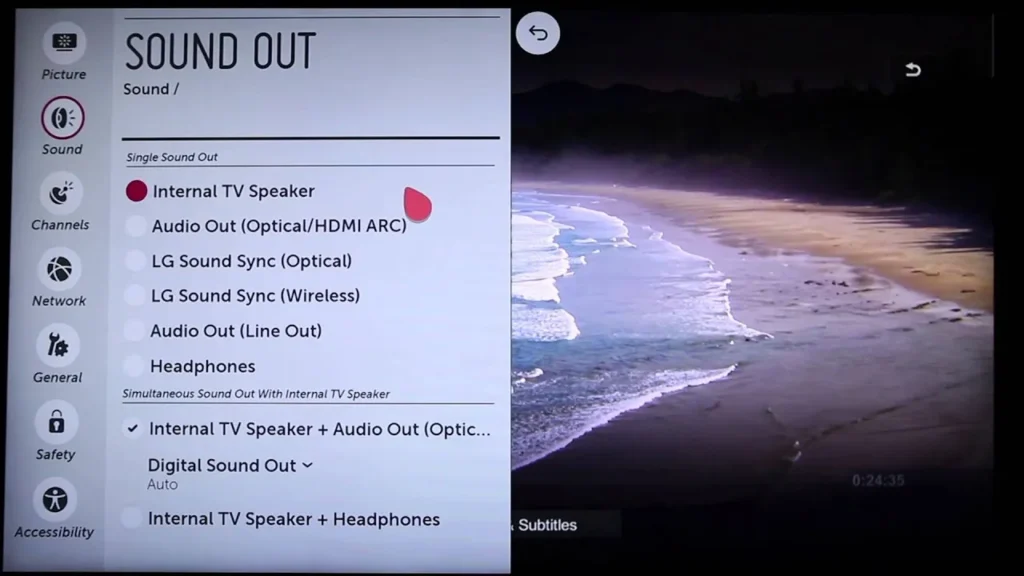Is your LG TV sound not working? It’s frustrating when you’re ready to watch your favorite show, but there’s no audio. Fortunately, most sound issues can be fixed with a few simple steps. This guide explains why your LG TV might have no sound and provides clear, actionable solutions to get your audio back. Whether it’s a quick fix or a deeper issue, we’ve got you covered at Teckwiki.
Common Reasons for LG TV Sound Issues
Before jumping into solutions, let’s look at why your LG TV might have no sound. Understanding the cause can help you fix it faster. Here are the most common reasons:
- Muted or Low Volume: The TV might be muted, or the volume could be too low to hear.
- Faulty Connections: Loose or damaged cables, like HDMI or optical, can disrupt audio.
- Incorrect Audio Settings: The wrong audio output or mode might be selected.
- Software Glitches: Outdated firmware or temporary software issues can affect sound.
- Hardware Malfunctions: In rare cases, internal components like speakers may be faulty.
| Cause | Description |
|---|---|
| Muted or Low Volume | TV is muted or volume is set too low to hear. |
| Faulty Connections | Loose or damaged cables prevent audio signals from reaching the TV or speakers. |
| Incorrect Audio Settings | Wrong audio output (e.g., external speakers instead of TV speakers) selected. |
| Software Glitches | Outdated firmware or temporary software issues disrupt audio functionality. |
| Hardware Malfunctions | Faulty internal components, like speakers or audio circuits, require repair. |
Quick Fixes to Try First
These simple checks can often resolve sound issues in minutes. Try them before moving to advanced steps.
a. Check Volume and Mute Status
First, ensure your TV isn’t muted. Look for a mute icon on the screen or press the mute button on your remote to toggle it off. Increase the volume using the remote or the buttons on the TV itself. Some LG TVs have physical buttons on the side or bottom for volume control.

b. Verify Physical Connections
Check all cables connected to your TV. If you’re using HDMI, optical, or RCA cables, ensure they’re securely plugged in and not damaged. Try unplugging and replugging them to reset the connection. If possible, test with a different cable to rule out a faulty one.

c. Select the Correct Audio Output
LG TVs let you choose where the sound comes from, such as built-in speakers or external devices. To check this:
- Press the Settings button on your remote.
- Go to Sound > Sound Out.
- Select the correct output based on your setup:
- TV Speaker: For built-in speakers.
- HDMI (ARC): For soundbars or receivers connected via HDMI ARC.
- Optical: For devices connected via optical cable.
- Bluetooth: For wireless speakers or headphones.
Ensure the selected output matches your actual setup. For example, if you’re using a soundbar, select HDMI (ARC) or Optical.

d. Perform a Sound Test
Many LG TVs, especially those running WebOS, have a built-in sound test feature to diagnose audio issues. To run it:
- Go to Settings > Support > Sound Test (or Sound Self-Diagnosis on WebOS 22 models).
- Follow the on-screen instructions to start the test.
- The test will play sounds to check if the speakers are working.
If the test detects an issue, it may suggest specific steps or indicate a hardware problem.
Advanced Troubleshooting Methods
If the quick fixes don’t work, try these more in-depth solutions. They address software glitches and deeper configuration issues.
a. Power Cycle the TV
Power cycling resets the TV’s internal memory, which can fix temporary software glitches.
- Unplug the TV from the power outlet.
- Wait at least 30 seconds.
- Plug it back in and turn on the TV.
- Check if the sound is restored.
This simple step can resolve many audio issues caused by software hiccups.
b. Adjust Audio Settings
Tweaking the audio settings might help. Different sound modes can affect audio output.
- Go to Settings > Sound > Sound Mode.
- Try modes like Standard, Cinema, Music, or Sports to see if one works better.
- If available, adjust the equalizer settings to balance the sound.
Some LG TVs also have a Quick Start feature that affects how the TV boots up. Check Settings > General > Quick Start and toggle it off to see if it helps.
c. Reset A/V Settings
Resetting audio and video settings to their defaults can fix configuration errors.
- Press the mute button on your remote three times quickly.
- A menu will appear; select AV Reset.
- Confirm the reset.
This restores the A/V settings to factory defaults, which may resolve sound issues.
d. Update TV Firmware
Outdated firmware can cause audio problems. Ensure your TV is running the latest software.
- Go to Settings > General > About This TV.
- Select Check for Updates.
- If an update is available, follow the prompts to install it.
Keep your TV connected to the internet for automatic updates in the future.
e. Factory Reset the TV
If all else fails, a factory reset can resolve persistent issues by restoring the TV to its original settings. Note: This will erase all your settings and data, so use it as a last resort.
- Go to Settings > General > Reset to Initial Settings.
- Follow the on-screen instructions to complete the reset.
- Set up your TV again and check if the sound works.
Preventing Future Sound Issues
To avoid sound problems in the future, consider these tips:
- Regular Updates: Keep your TV’s firmware updated to prevent software glitches.
- Quality Cables: Use high-quality HDMI or optical cables to ensure reliable connections.
- Surge Protection: Use a surge protector to protect your TV from power surges that could affect audio components.
- Correct Setup: Ensure external devices like soundbars are properly configured and set to the correct input.
- Check Store Mode: Some LG TVs may be in Store Mode, which can alter audio settings. Go to Settings > General > Mode Setting and select Home Mode.
When to Contact LG Support
If none of the above steps work, the issue might be hardware-related, such as a faulty speaker or audio circuit. Contact LG Customer Support for help. You can also call their support line at 800-243-0000 (8 AM-9 PM EST) or visit their Request a Repair page to schedule service.
Frequently Asked Questions
Why is there no sound on my LG TV but the picture is fine?
This is often due to muted volume, incorrect audio output settings, or loose cables. Check the mute status, verify connections, and ensure the correct audio output is selected.
How do I reset the sound on my LG TV?
Press the mute button three times and select AV Reset from the menu to restore default audio settings.
What to do if LG TV sound cuts out intermittently?
Secure all cables, update the firmware, or perform a factory reset. If the issue persists, contact LG Support.
How to fix LG TV sound not syncing with video?
Adjust the audio delay in Settings > Sound > Audio Delay. Also, check if the source device (e.g., cable box) is causing the delay.
Can I use external speakers with my LG TV?
Yes, connect external speakers via HDMI ARC, optical, or Bluetooth. Select the appropriate output in Settings > Sound > Sound Out.
Conclusion
Sound issues on your LG TV can disrupt your viewing experience, but they’re often easy to fix. Start with simple checks like volume and cables, then move to advanced steps like resetting settings or updating firmware. By following this guide, you should be able to restore your TV’s audio. If problems persist, LG Support is there to help.
For more TV troubleshooting tips, check out these guides on Teckwiki:

